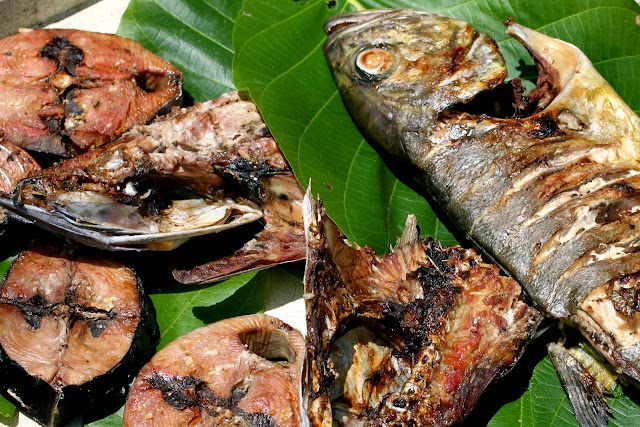I was
lucky enough to go on a spectacular road trip this weekend to visit Jaco
Island. Jaco is just off of the easternmost district of Timor-Leste,
called Lautem and the village closest to Jaco Island were I stayed is called Tutualaa.
I am proud to say that Mitsubitchy made it down the
treacherous 8.8km “road” (navigable only by a 4WD) and enjoyed 2 nights of
camping on Valu Beach.
Here
are a few pictures to document the journey.
Baucau- after a 3 hour drive from Dili, we enjoyed this Thursday night sunset and rising full moon. We ate at a tiny beach restaurant after I recovered my stolen ipod from (child) criminals after some savvy detective work and a cash reward. That, and not being hit by falling coconuts during our dining experience were worthy of celebration with several ice cold Heinekens.
Friday morning we left Baucau for another 4 hour drive to Jaco Island. Around kilometer marker 200, I finally saw a Timor crocodile.
It was nearly 5 meters long.
This photo gives some scale. Such a thrill.
Along the way there are beautiful Fataluku houses, which are traditional homes in the Lautem district, particularly in Lospalos. These were decorated with ropes of beads and shells.
The beginning of Irasiquero Lake, the largest freshwater lake in Timor.
The view from the Pousada at Tutualaa. The water is crystal clear even from the top of the ridge.
We enjoyed a full moon over Valu Beach.
On Saturday we took a ferry over from Valu Beach to Jaco Island. We enjoyed a lunch of freshly caught yellow-fin tuna and another white fish that were both tasty. My friend purchased 2 fish ($40 total) from the fisherman who ferried us over in the morning and they grilled them for us. After a morning of hard snorkeling it was divine. Sitting in the soft white sand, we ate the fish steaks with our salty fingers reveling in our good fortune (our view of the crystal water) and delicious feast.
Jaco Island is part of the famed Coral Triangle, an underwater area that holds the world’s greatest diversity of both corals and coral reef fish, and is protected by the Nino Konis Santana National Park. The island is considered a sacred site by locals and is uninhabited. There are no permanent structures on the island, camping is prohibited, and its only regular visitors are fishermen and expats from Dili like myself.
There are not enough adjectives and synonyms for the word beautiful to describe this beach.
The closest thing I could find are the words of Abhijit
Dutta:
As a beach, it’s a brochure writer’s dream:
Every cliché about blemish-less white sand finer than powder is true; every
licentious poem about color-crazy seas, is true; every incredulous story about
water so clear naked eyes can spy its bare heart, is true. But Jaco also has a
certain silence, almost a spiritual calm.
Quite a special place.


No comments:
Post a Comment